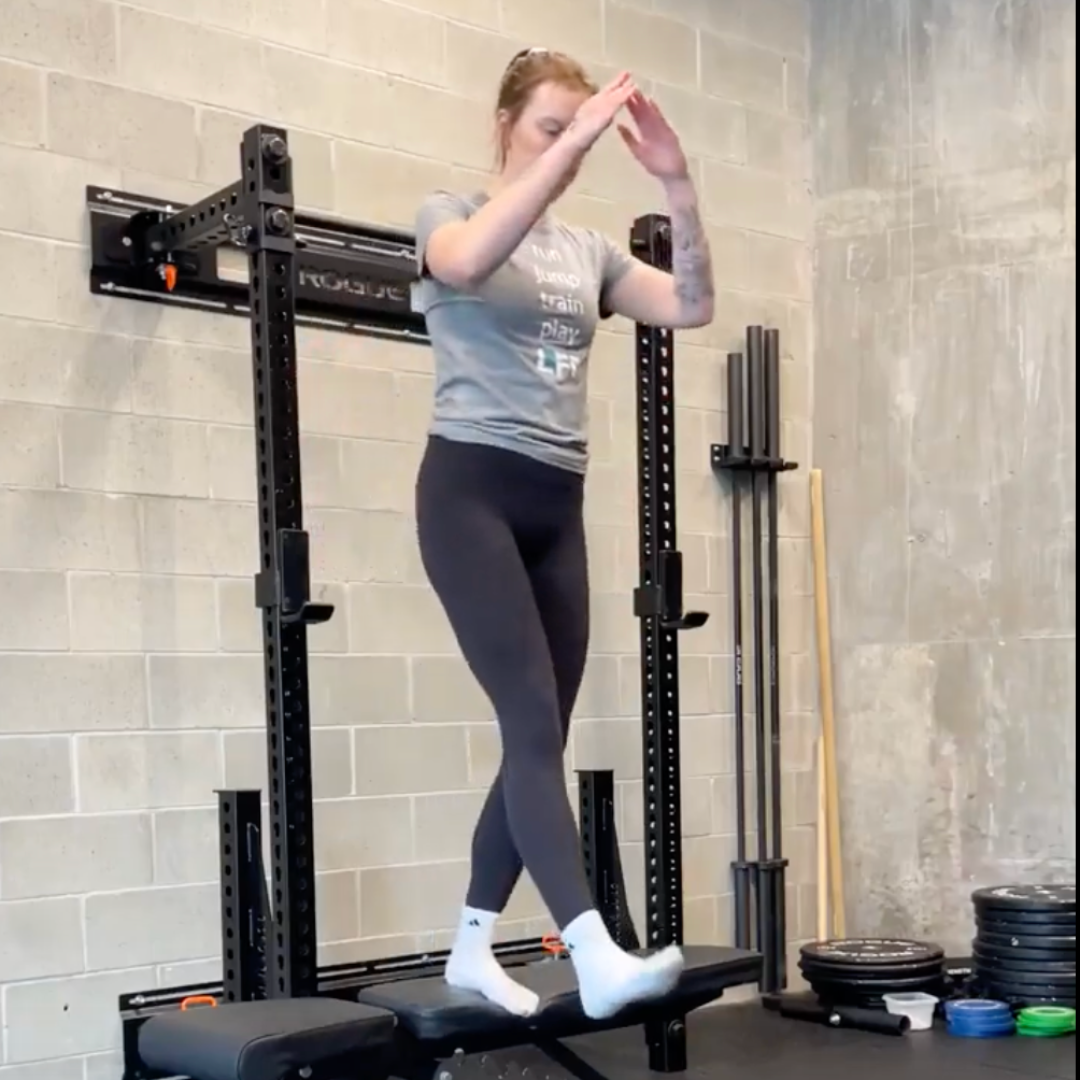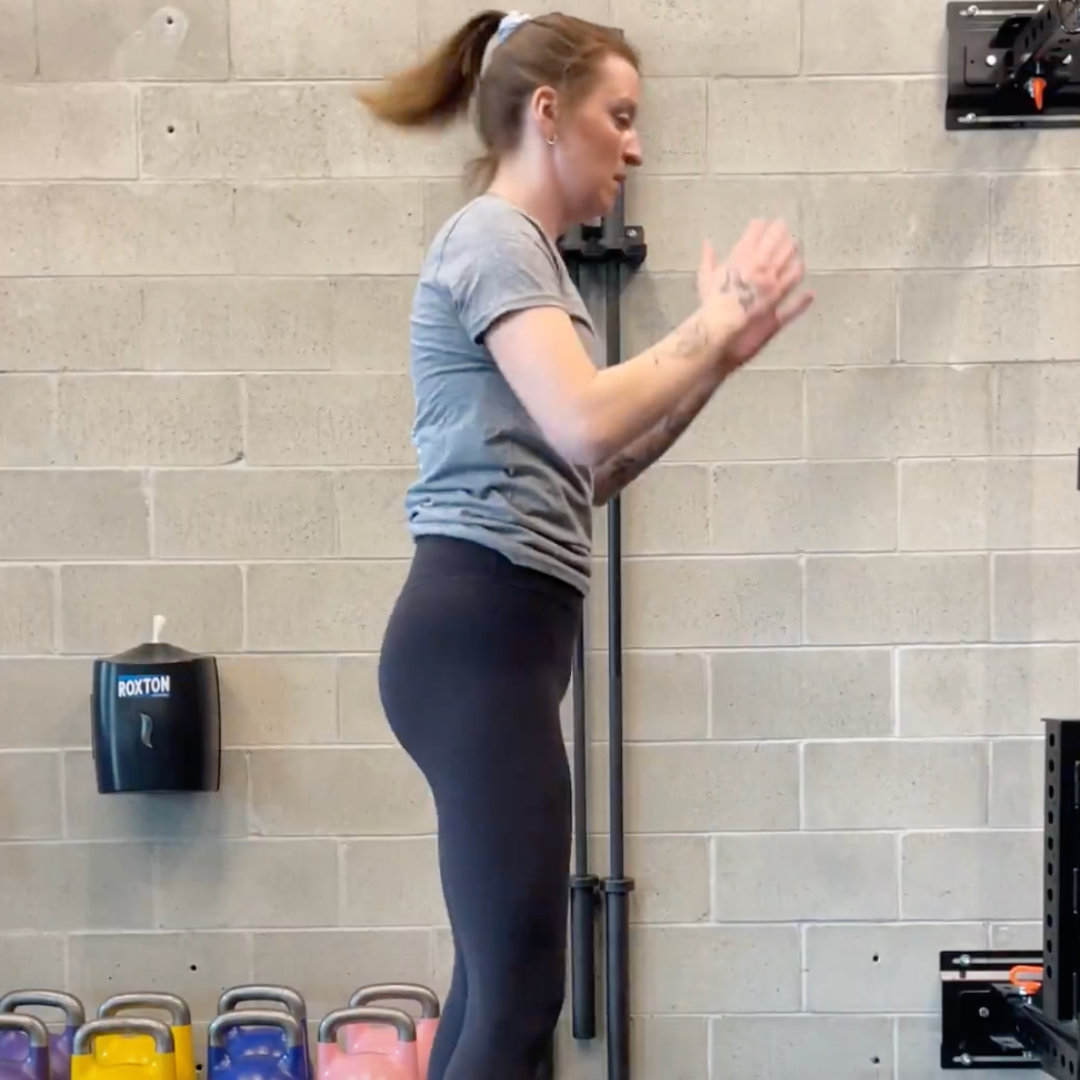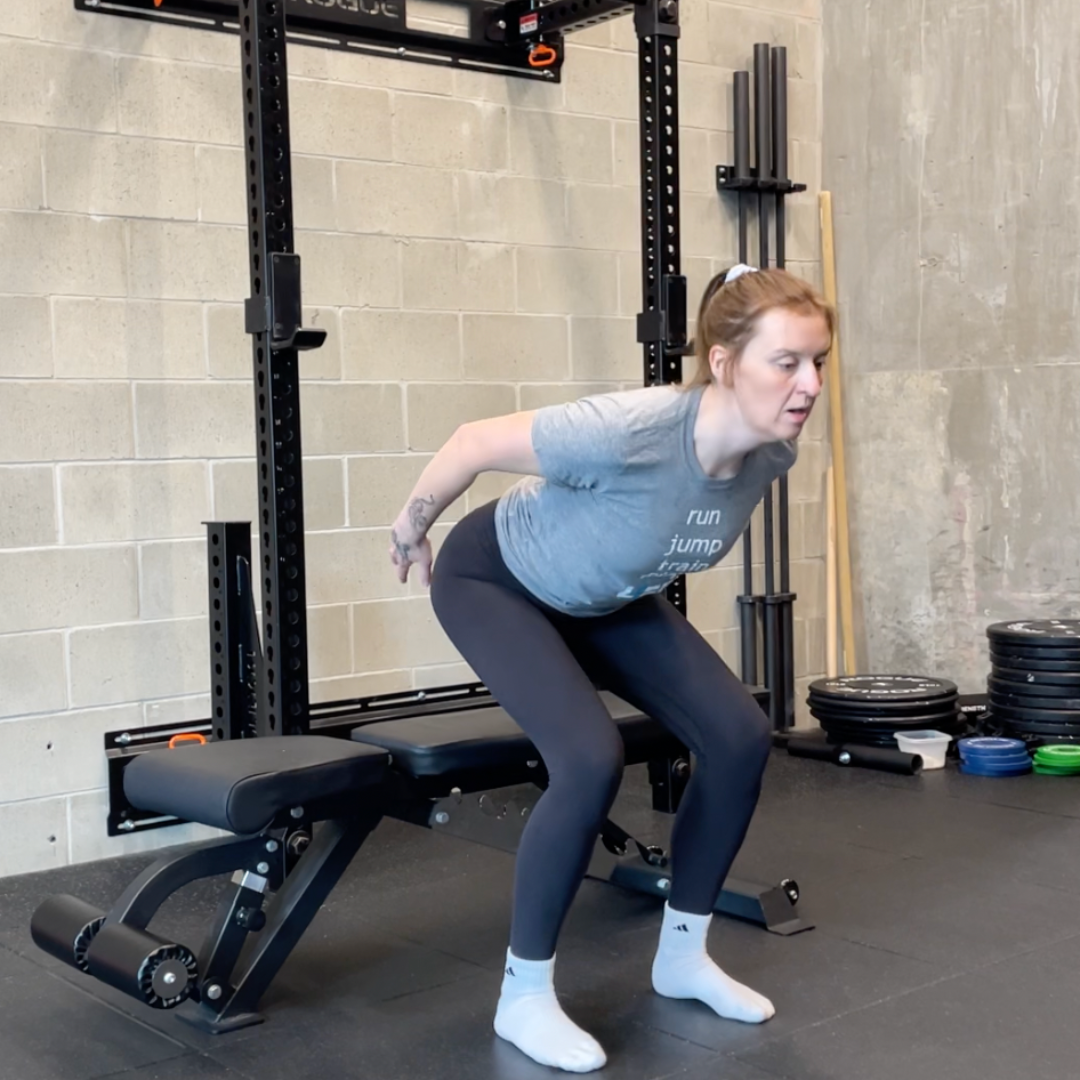Jump higher and optimize your health and performance with Lift Clinic’s team of physio, chiro, RMT and strength coaches!
This post will focus on proper jumping mechanics and jump progression that is crucial for injury prevention and increased performance.
If you haven’t already, check out our previous posts on linear speed and change of direction, where we show assessments, hands-on treatment and exercises for agility, acceleration, deceleration, and strength.
Why are jumping mechanics so important?
- Injury Prevention
Landing with improper mechanics repeatedly can put unnecessary stress on joints and their structures which can lead to overuse injuries.
- Increased Performance
Jumping with proper mechanics can allow you to recruit the necessary muscle groups that will help you produce the most power and help you jump higher and farther.
How can you practice jumping? Visit our Instagram to see vertical jump progressions!
What does a proper jump look like?
A regular countermovement jump can be separated into 4 phases.
Arms come down and behind, chest stays up, knees and hips are flexed, weight is distributed evenly through both feet, feet are around shoulder-width
apart, knees are in line with toes.
Arms initiate the movement with an upswing, ankles, knees, and hips extend.
Body is straight, ankles are dorsiflexed – avoid jumping into a pike position.
Land in the same position as your preparatory phase – chest up, knees, hips and ankles are flexed and weight is evenly distributed through both feet, arms come down and behind, feet should be about shoulder-width apart, and knees should be in line with toes.
What are common mistakes to look for?
- Knee valgus or knees caving
Landing with improper mechanics repeatedly can put unnecessary stress on joints and their structures which can lead to overuse injuries.
- Jumping with arms down
Make sure that your arms are swinging in the direction of your jump. Your arms should be initiating the movement in coordination with the lower body.
- Landing with straight or stiff legs
Ensure you are absorbing the force on your landing by bending through knees and sitting into your hips. Aim for your landing to be quiet!
Try these vertical jump variations to make sure your jumps are efficient and safe!

1) Snap Drops
Keep your knees I line with your toes and your chest up while bending through the knees and sitting back into the hips.

2) Depth Drop
Stepping off platform to drop into your proper landing position.

3) Vertical/Broad Jump
Try to land in the saw spot you started from, remember to absorb the force as you land and avoid landing with straight legs.

4) Depth drop to vertical/broad jump
Stepping off platform to assume a proper landing position that directly goes into a full countermovement vertical or broad jump.
What's next?
For an extra challenge: try these exercises single legged – remembering to keep your hip knee
and ankle joints on the supporting leg stacked and hips square.
If you or a group of friends want to get a jumpstart on jumping higher, improving your technique and skills you can book with our strength coaches who offer individualized coaching and programming for all your speed and strength needs!
See what our clients have to say
Diana is a great physiotherapist. In the sessions I’ve had with her, she has done thorough assessments and helped me reduce the upper body tension I was feeling from my desk job. The exercises she gives are helpful and are adjustable to your level. I love the PDF summaries she sends of the take-home exercises I learned about during our sessions
